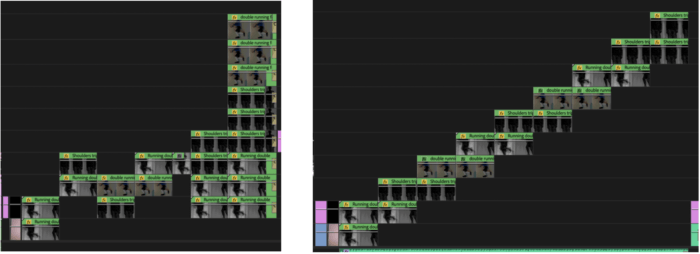Response 6 - The Dad Dance
Thanks for this task, Marie! It turned out to be too much fun, and I had to scale back my ambitions for fulfilling it.
I must admit, I was afraid that you would also respond to Task 5 by getting me to dance the choreography you came up with. And you did! But as you will see, I’ve stayed well within my comfort zone with this response, dancing only the white man bits of the choreography, and evading any technical and ethical issues to do with mimicking Beyoncé or Michael Jackson. Here's the Dad Dancing Film I have made...
My intentions were braver than the results though! In the film, I had planned to have four titled sections corresponding to the four ‘choreographers’ you visually quote and credit in your response to task 5: DB for David Byrne, BK for Beyoncé Knowles, MJ for Michael Jackson and MC for Madonna Ciccone. However, my material ended up too ambitious for the time available and I had to cut it short. So, instead of finishing the task/film, I completed the first, DB, section only and didn’t get beyond the section title, BK, for the second section of four. I do, however, provide an alternate version of the DB section – this is because I realised I may have been overcomplicating the aesthetic, with my excitable use of multiple and mosaic screens. Certainly, I spent some of a sleepless night wondering if I needed more passionately to embrace minimalism. And so, in the second version of the DB section, more simple and more satisfying to my mind (though too long), I limited myself to a ‘crawling’ effect that mirrored the action of running set in the choreography. Interesting to compare these screenshots of the editing timelines for the two versions. As you can, the second is much more elegant:

Screengrabs from editing timeline of DB versions 1 and 2
In making this unfinished film, I was thinking about a comment you’ve made about the genre or practice of ‘dance film’. You have suggested that a dance film might not (only) be a ‘record’ of a dance, but that the dance might happen in the film itself, and especially in the editing. As filmmaker Gus Reed puts it on dancefilms.org:
In dance for the camera, the film itself, not just the human figures it represents, must dance. Images of the body in motion are, perhaps, no more integral to the whole than the movement of the camera or the timing of the edits.
In any case, I though of myself as making a dance film, with the emphasis on the making. I follow my teacher Catherine Grant in describing this work of making as ‘material thinking’. By this is meant a practice that does not illustrate a pre-existing idea, but that allows a result/product to emerge in a dialogue with the material itself, where the material (footage, editing programme, even the brief or task) has its own intention and agency, so to speak. The unfinished character of Dad Dancing Film, and the second thoughts allowed to manifest themselves in it, are not evidence of thought but are the thing itself, glimpsed and captured in progress.
